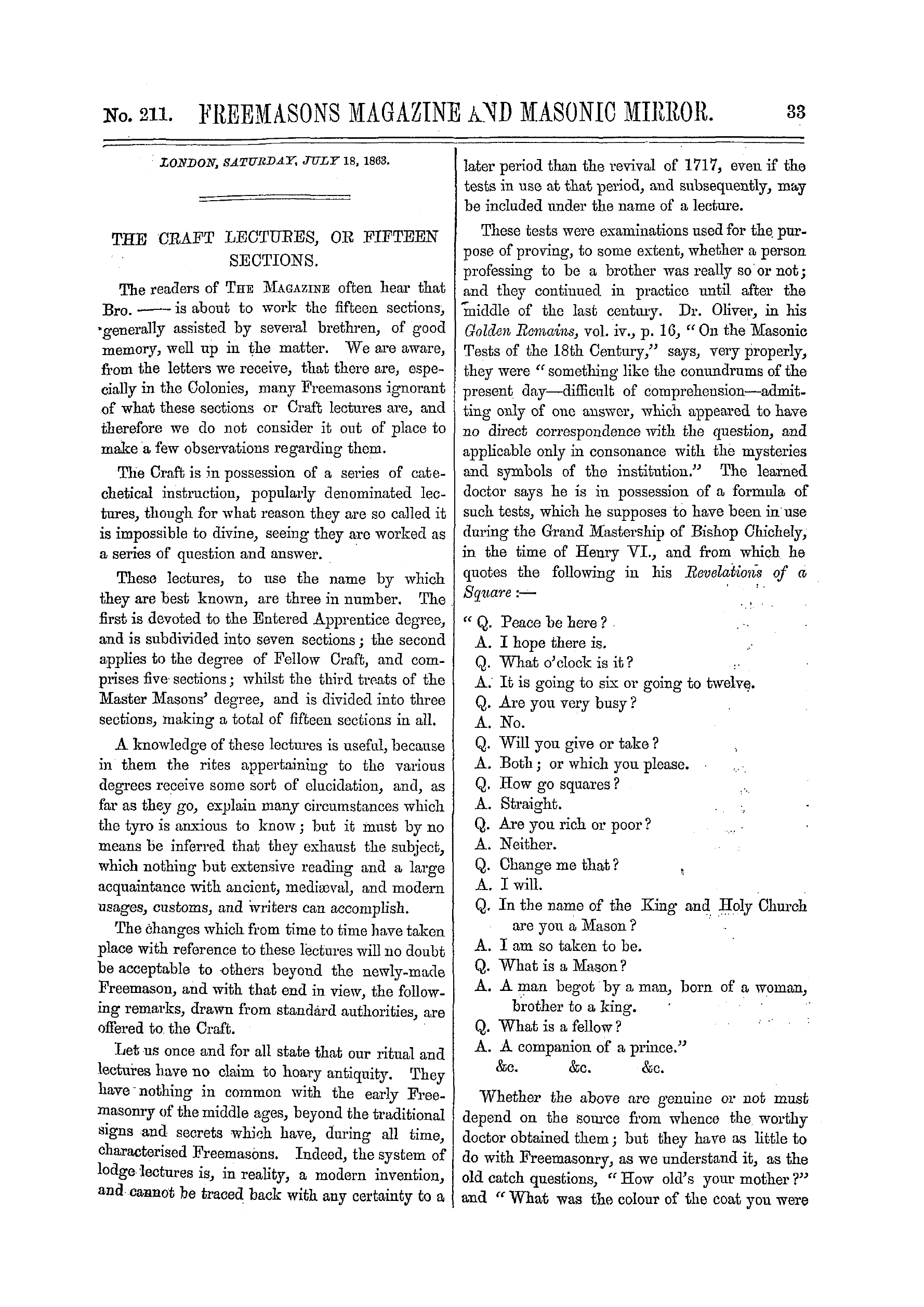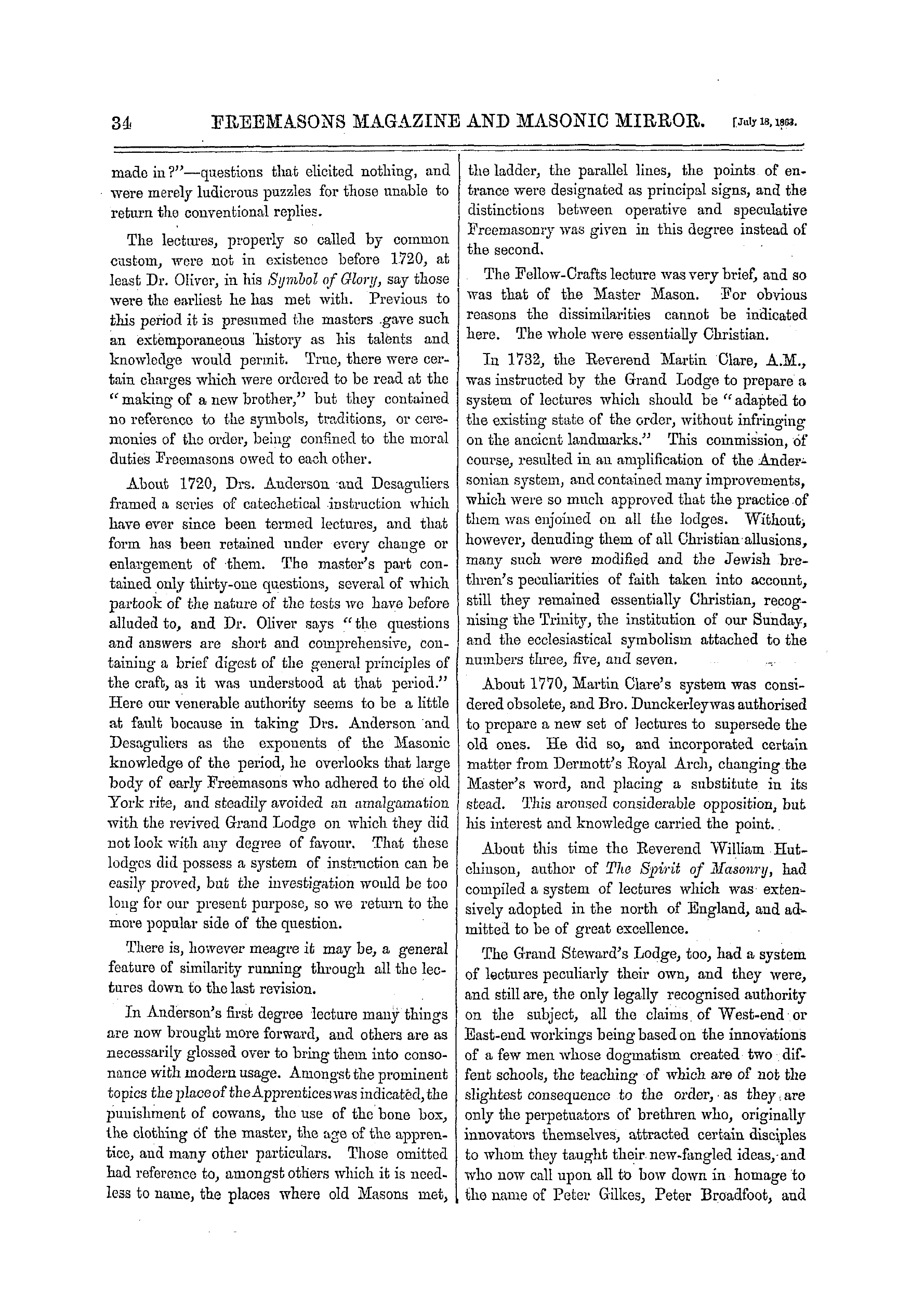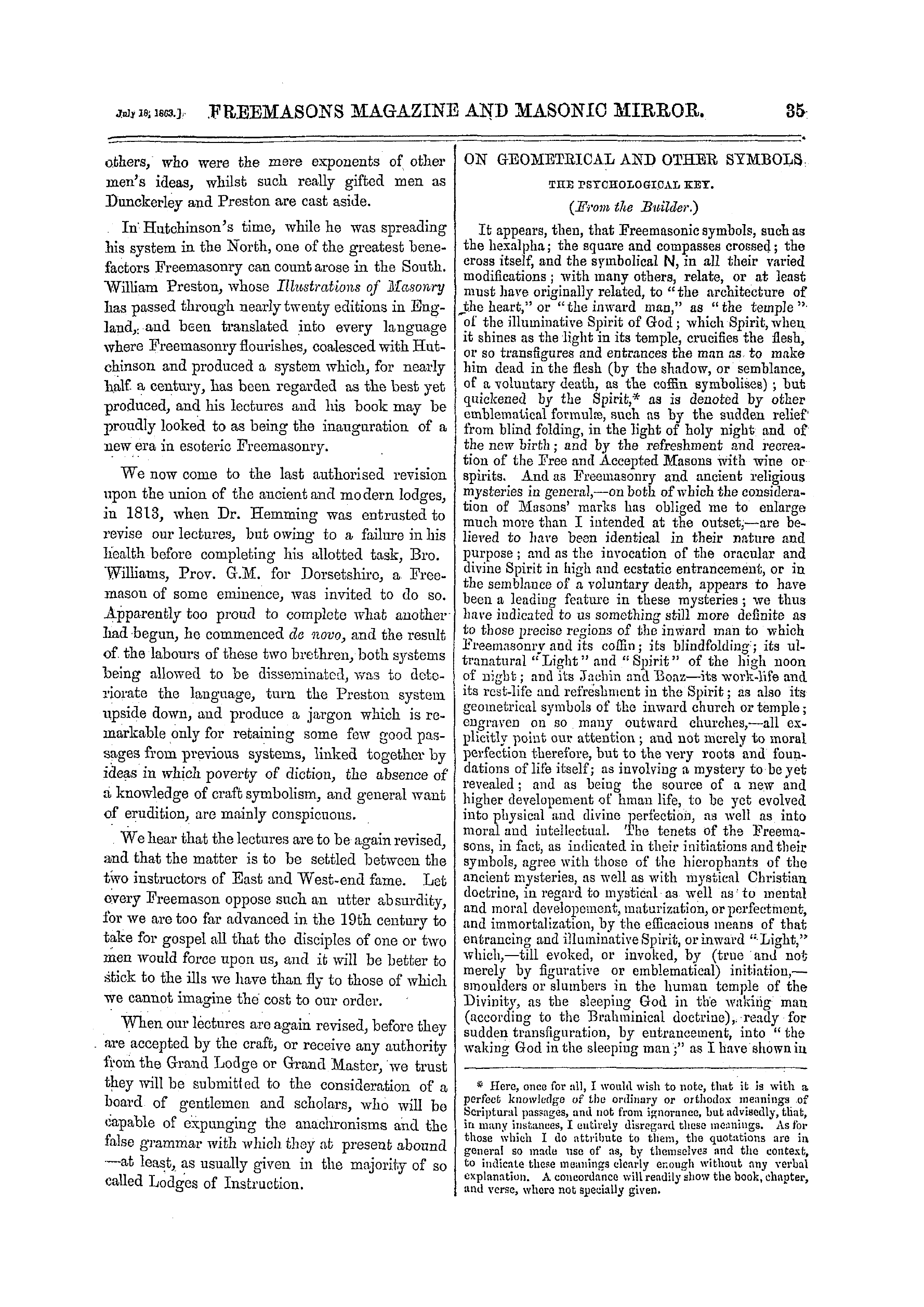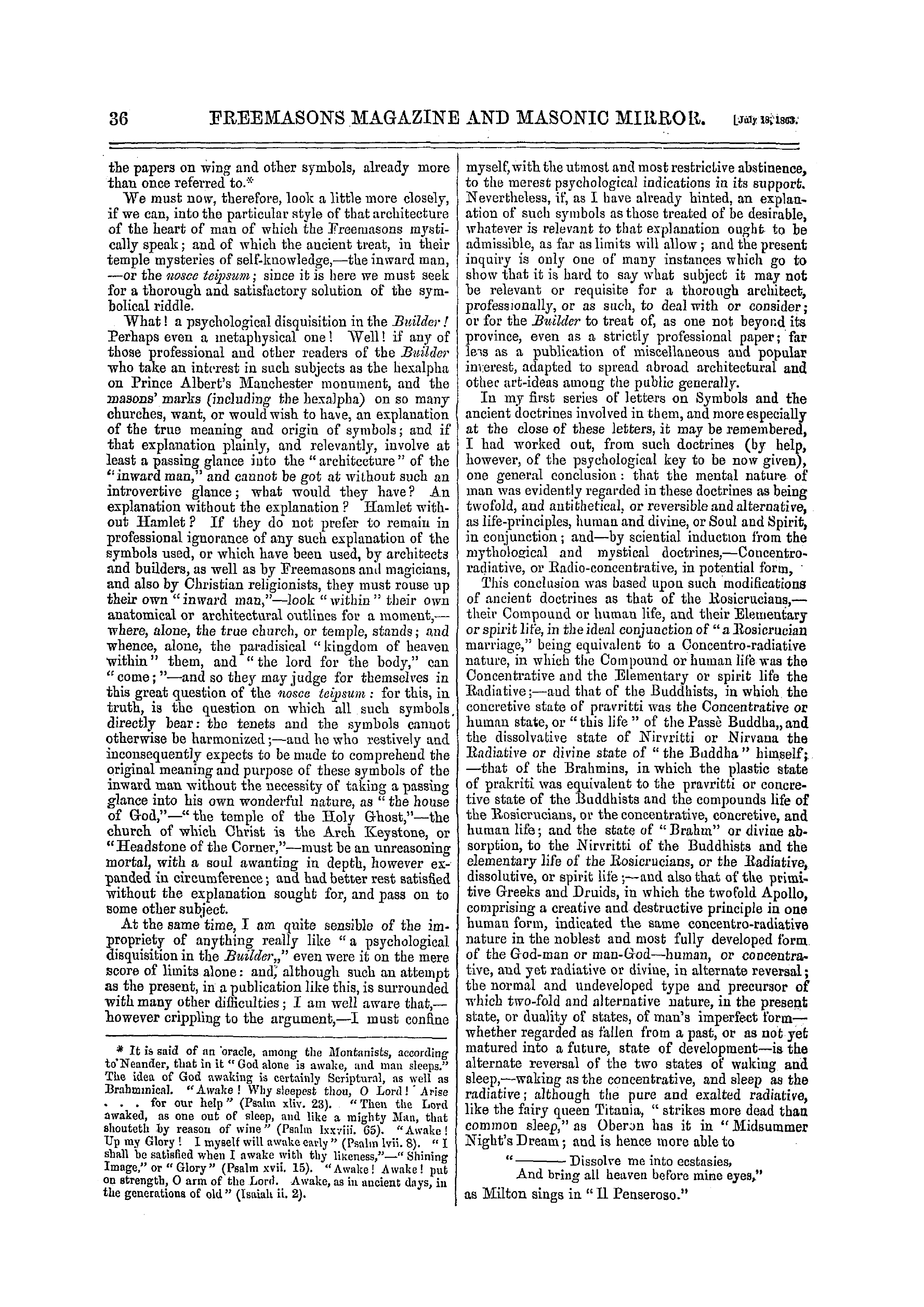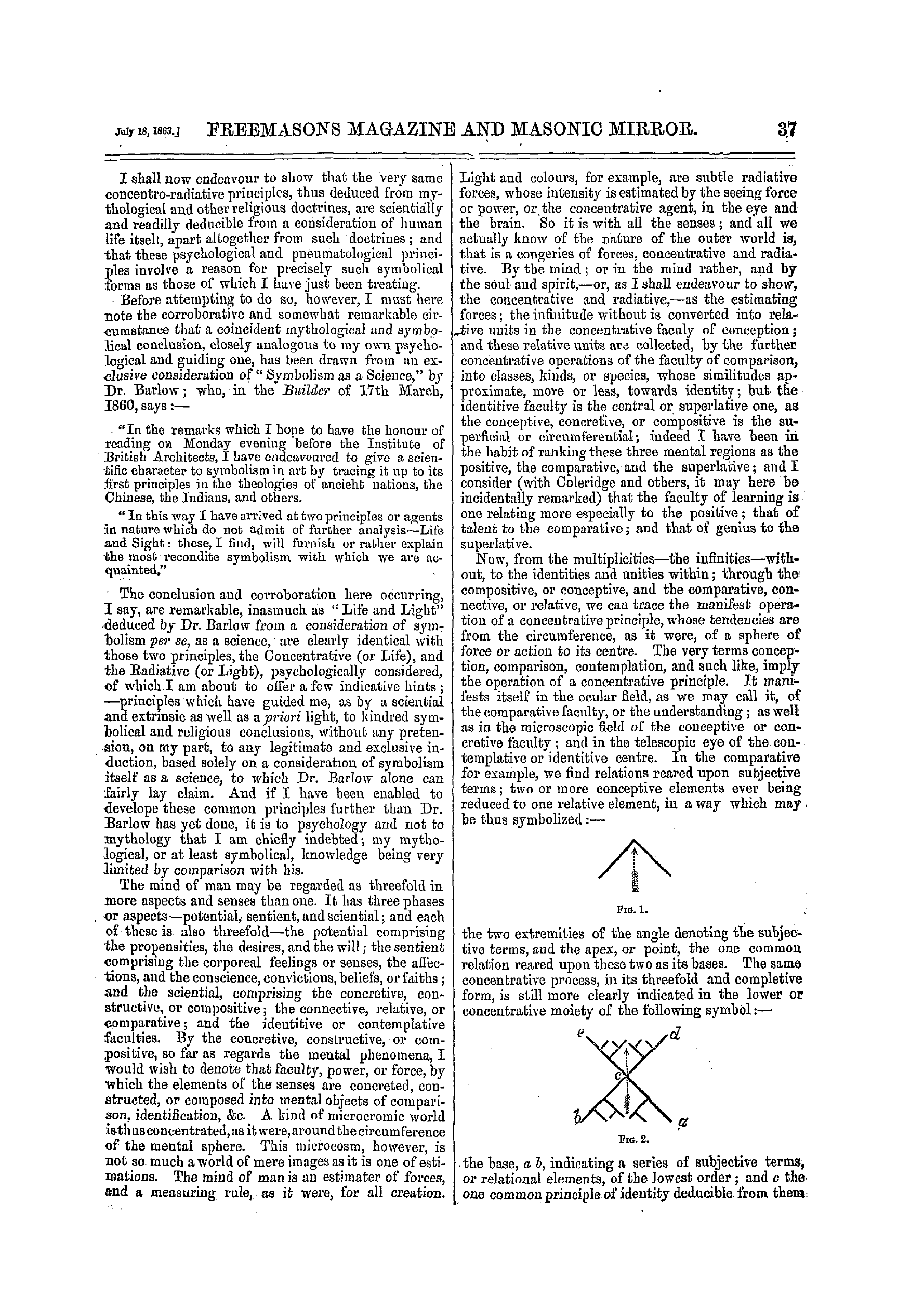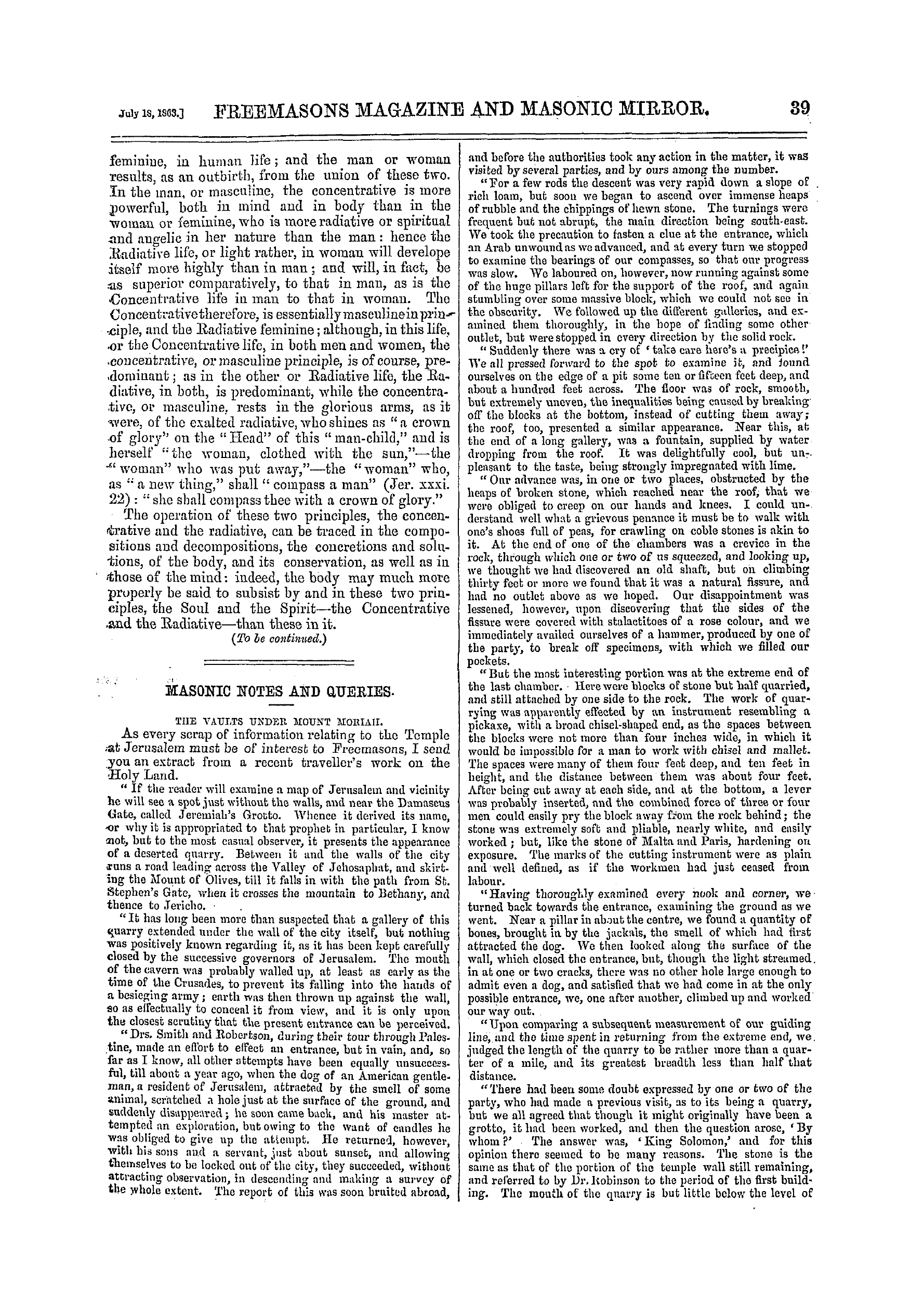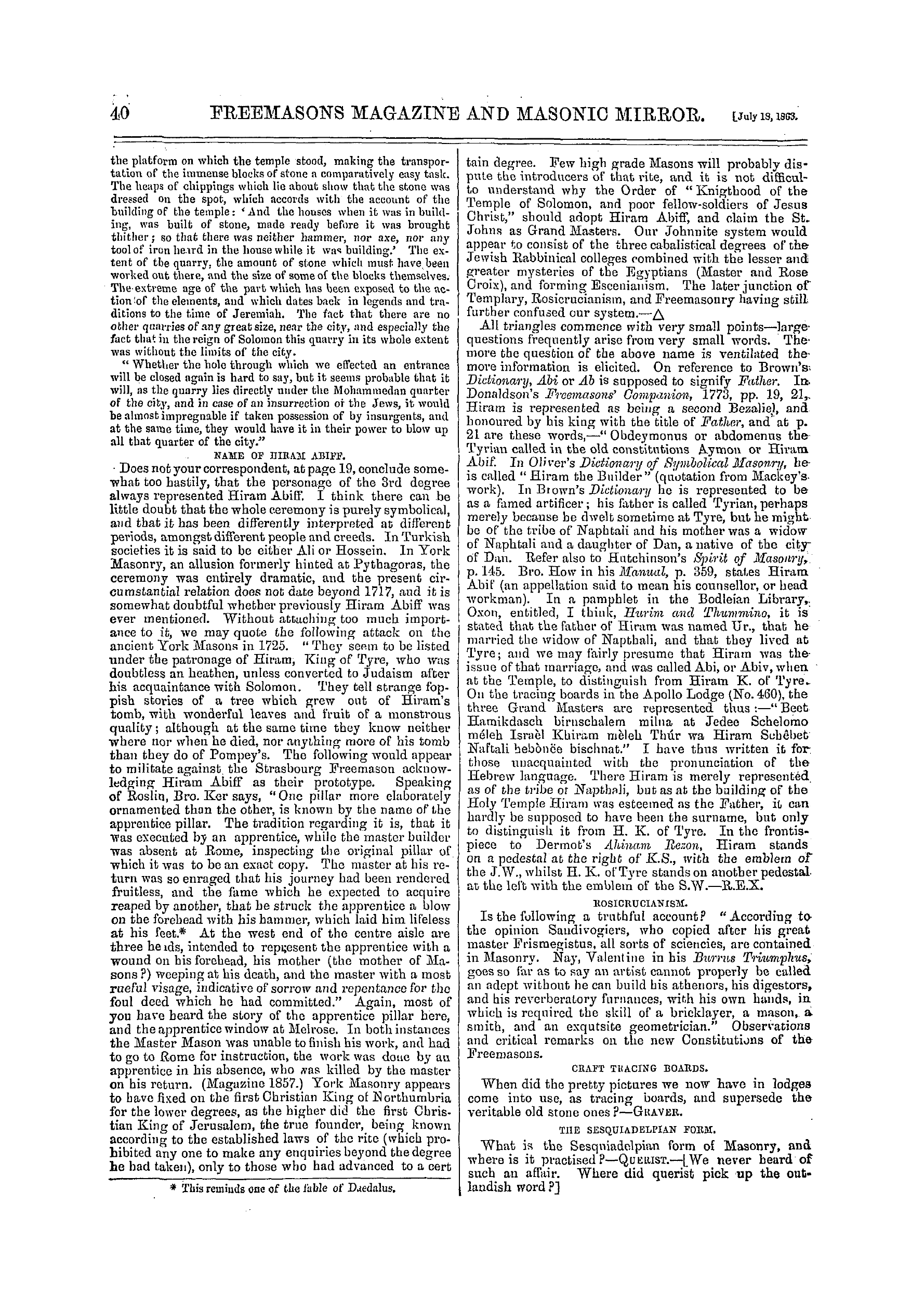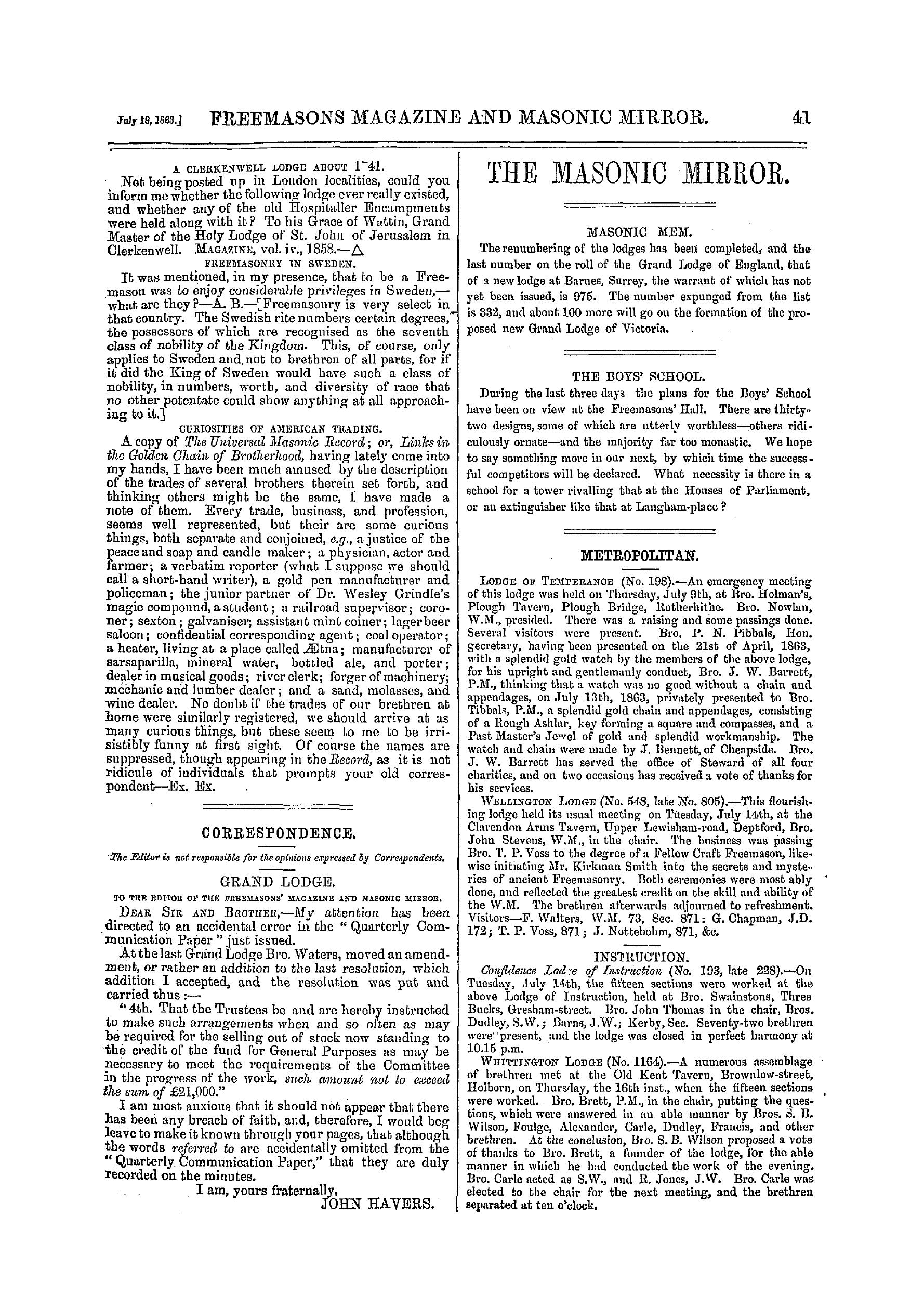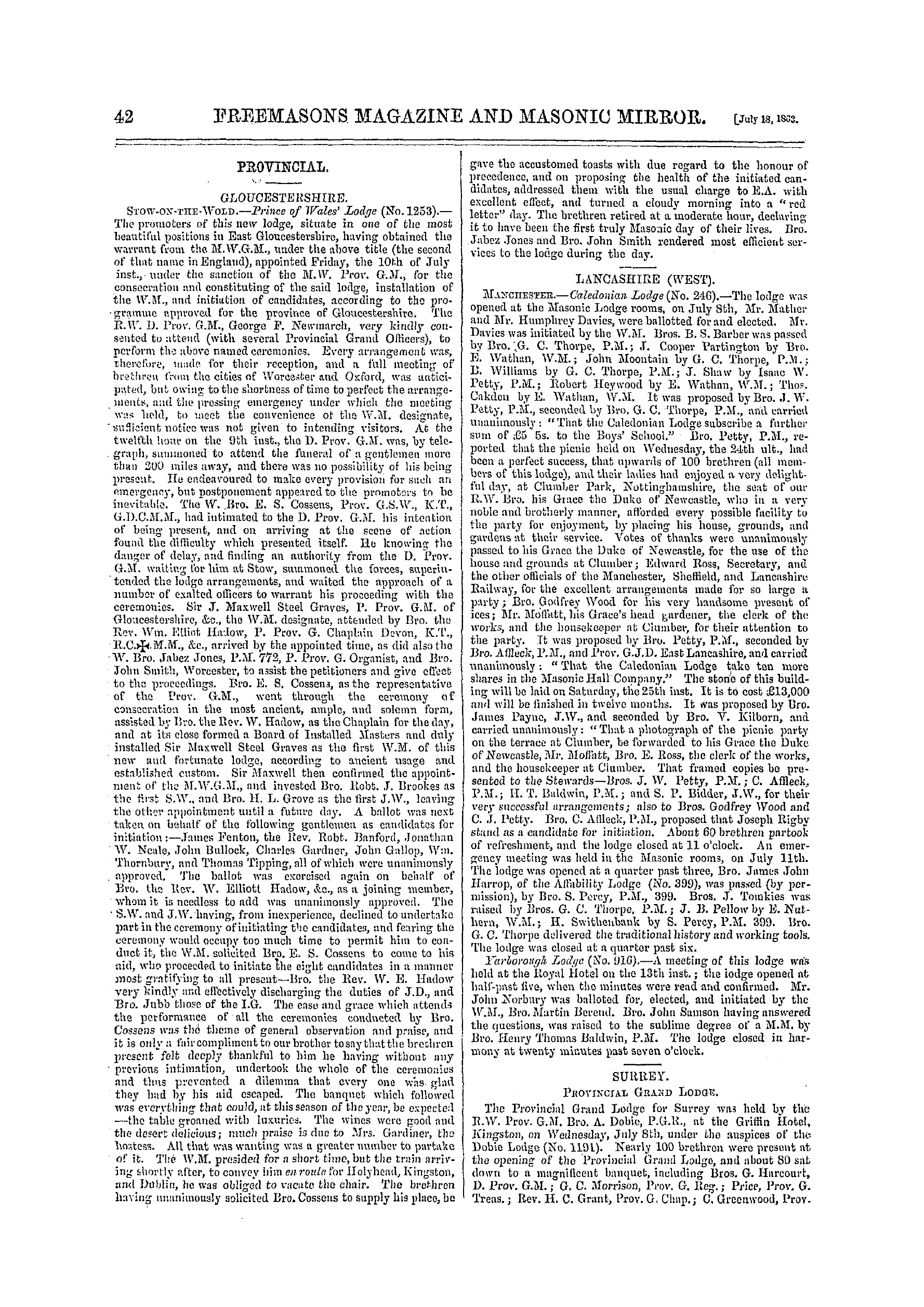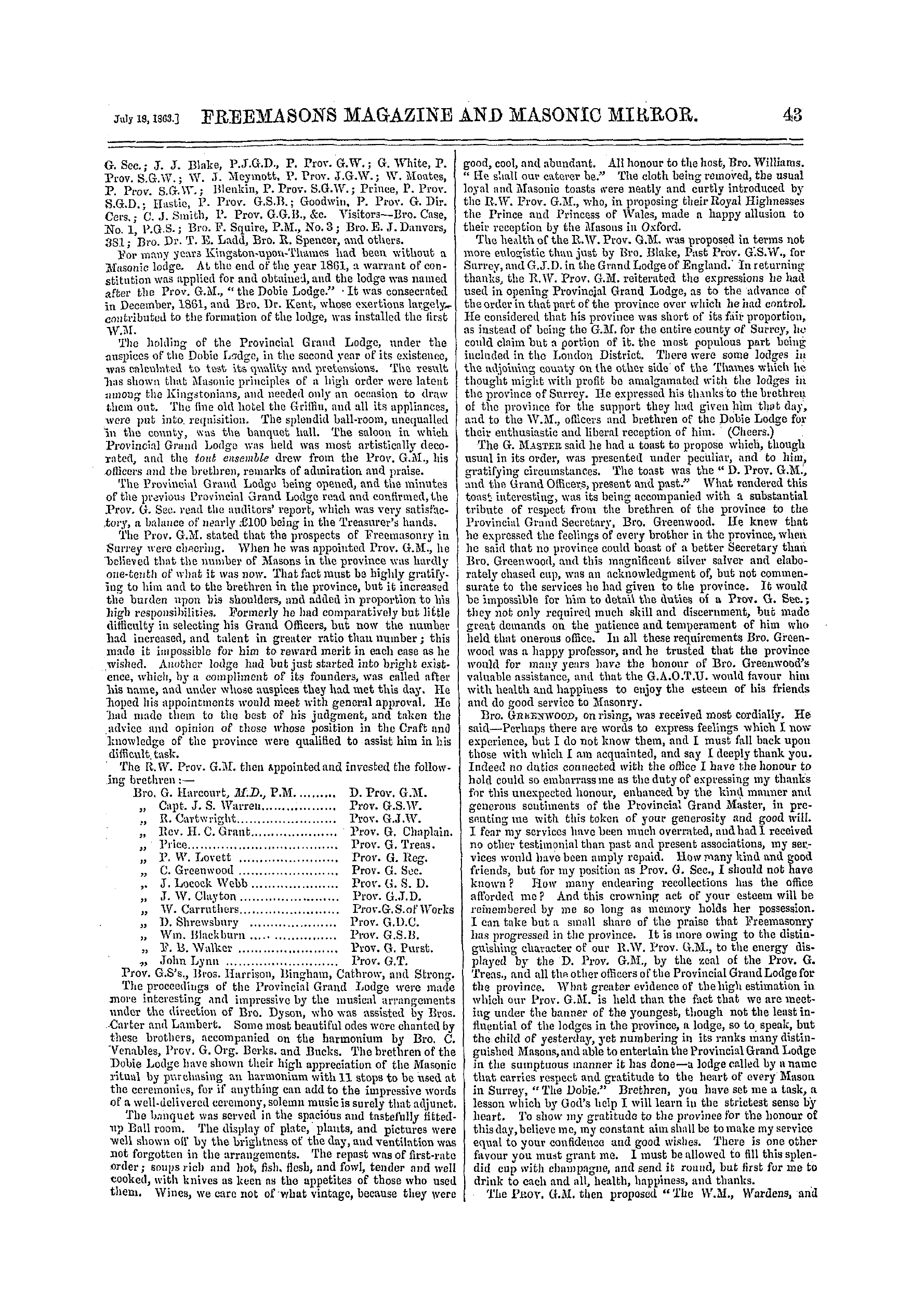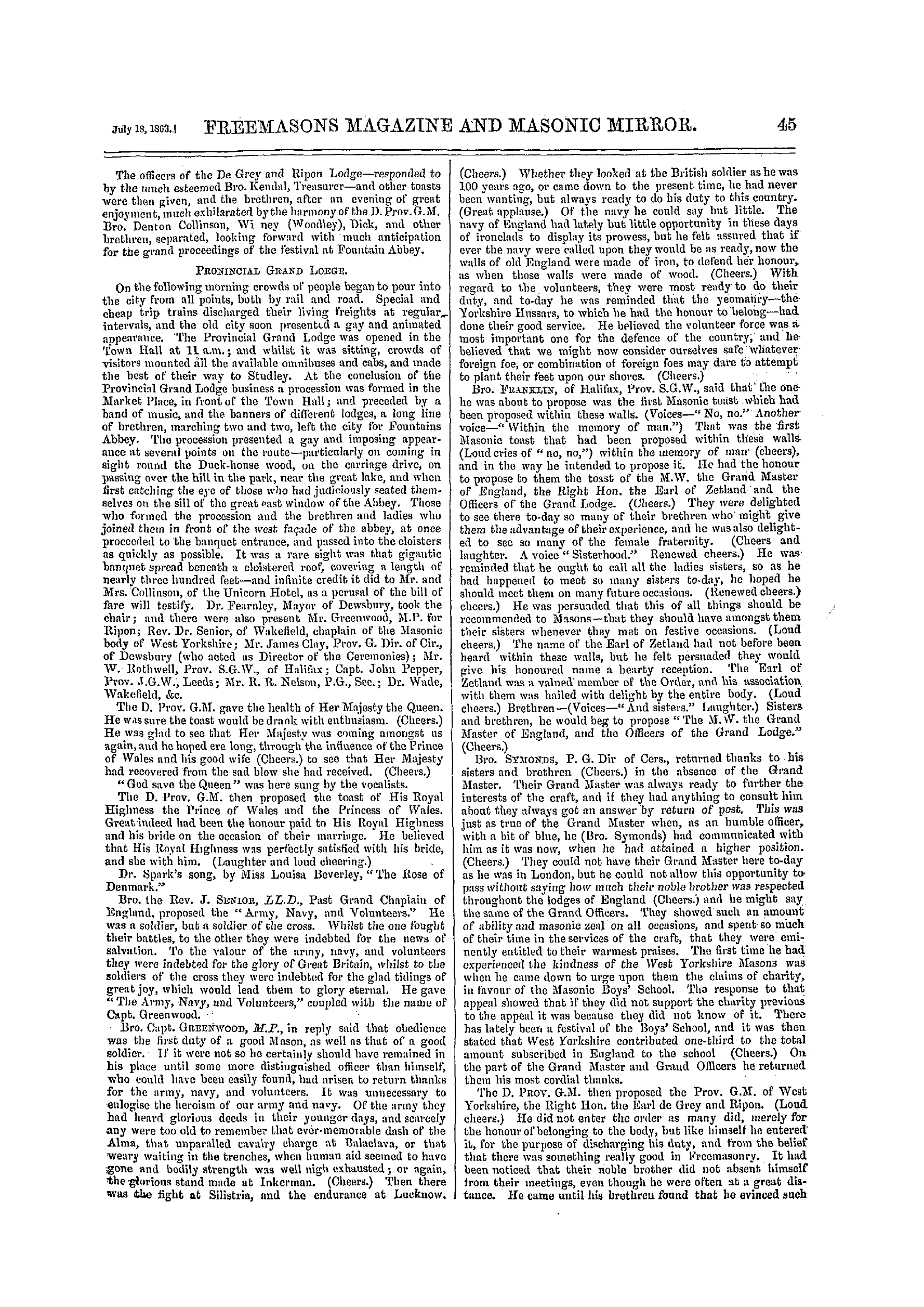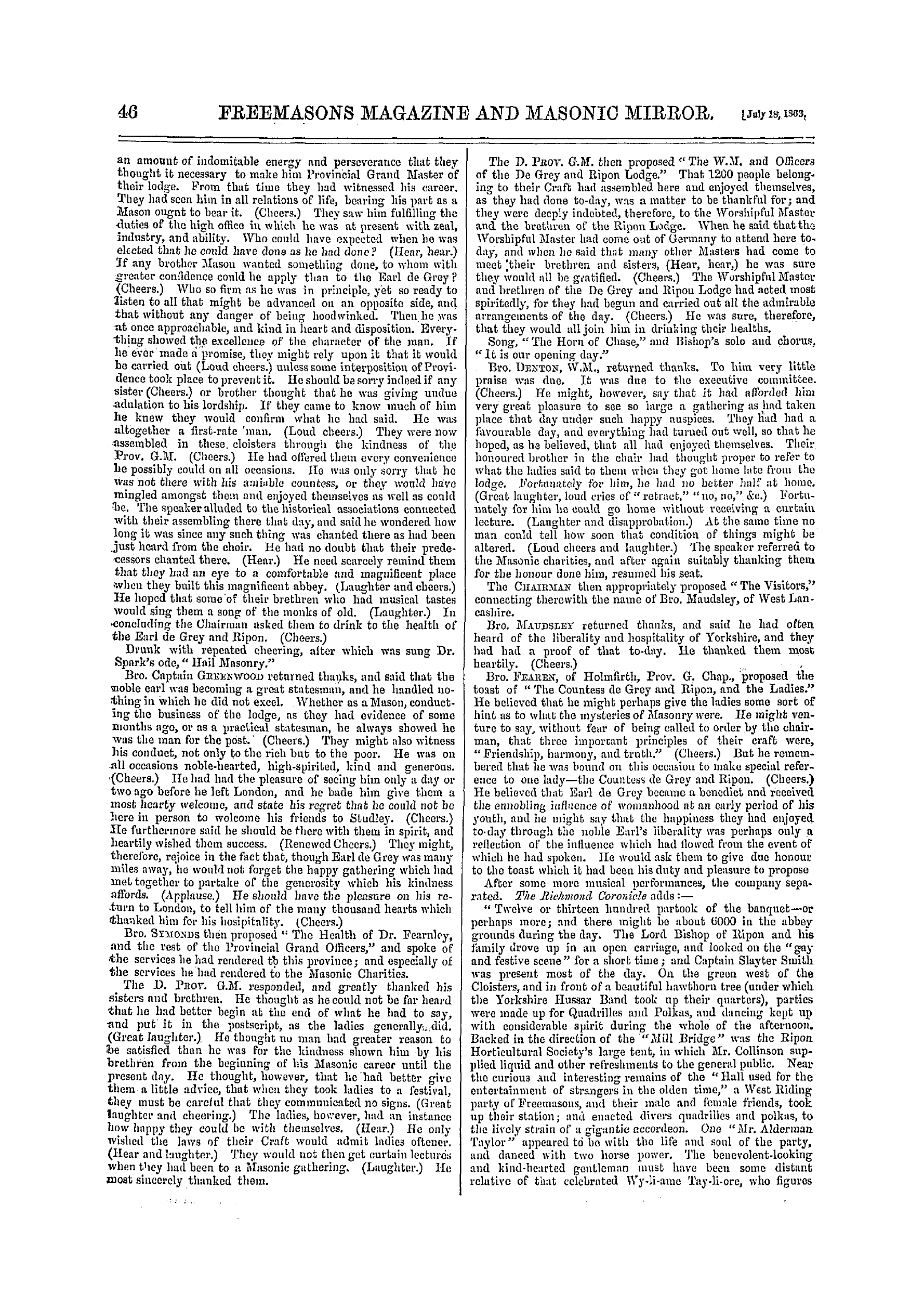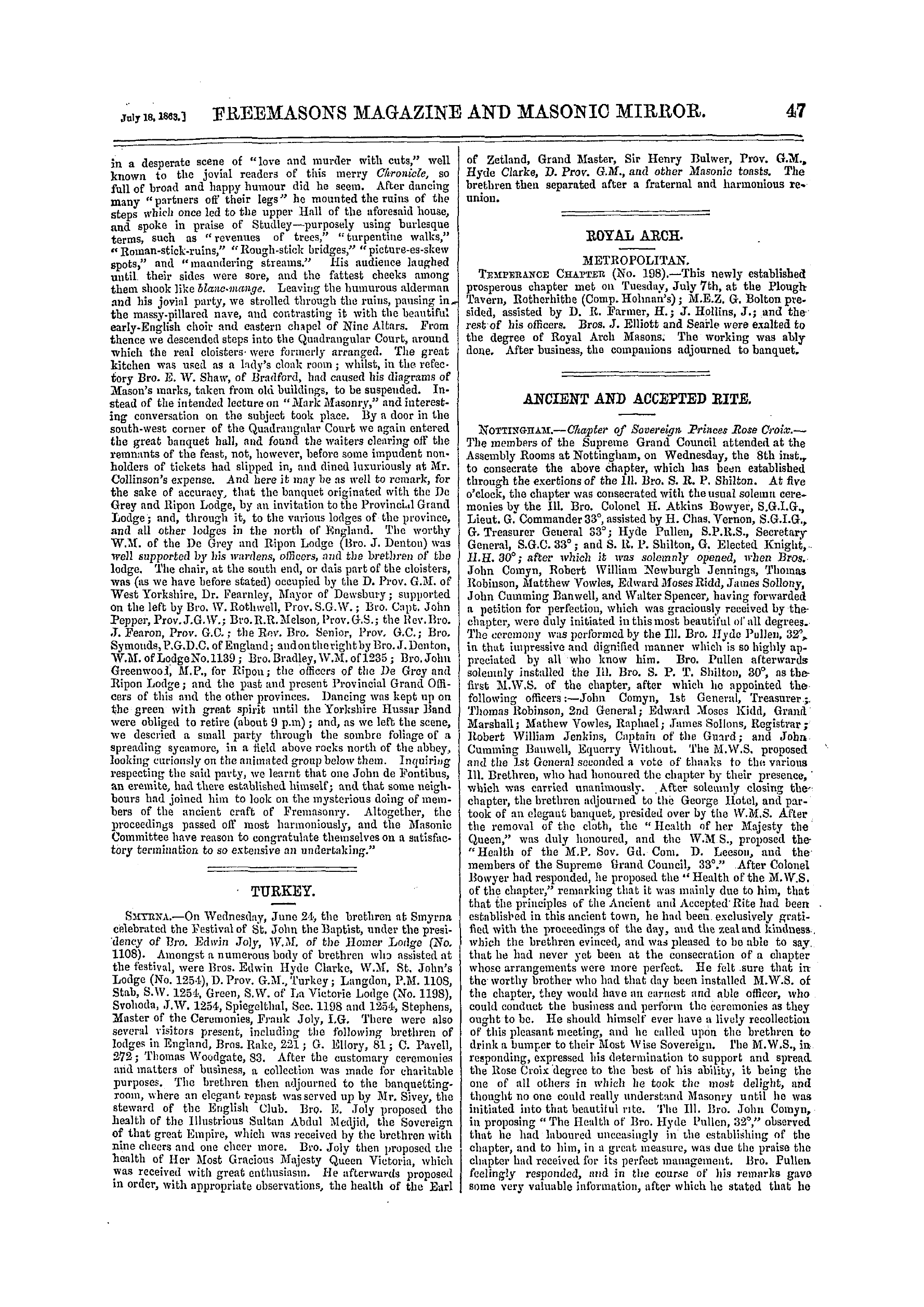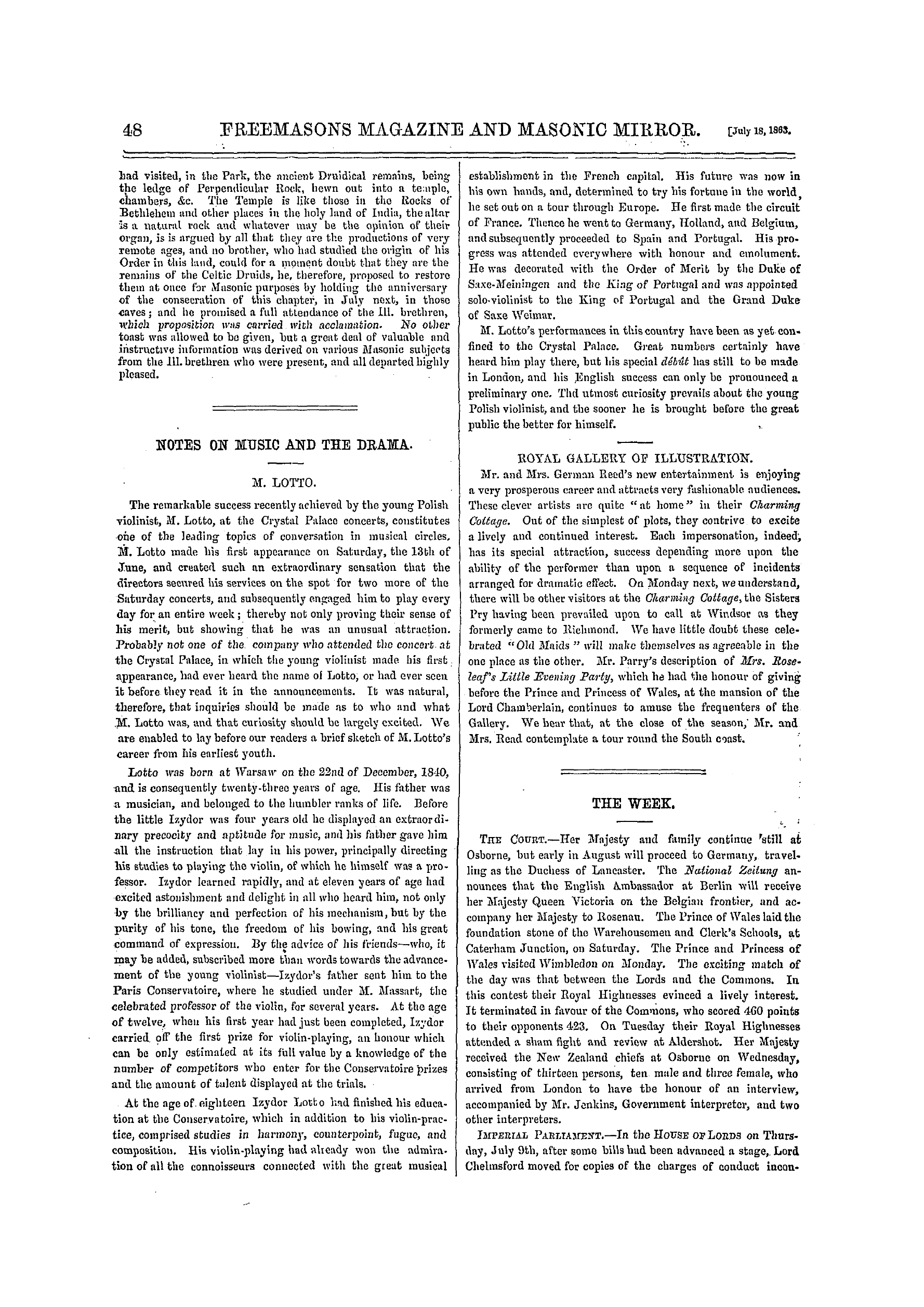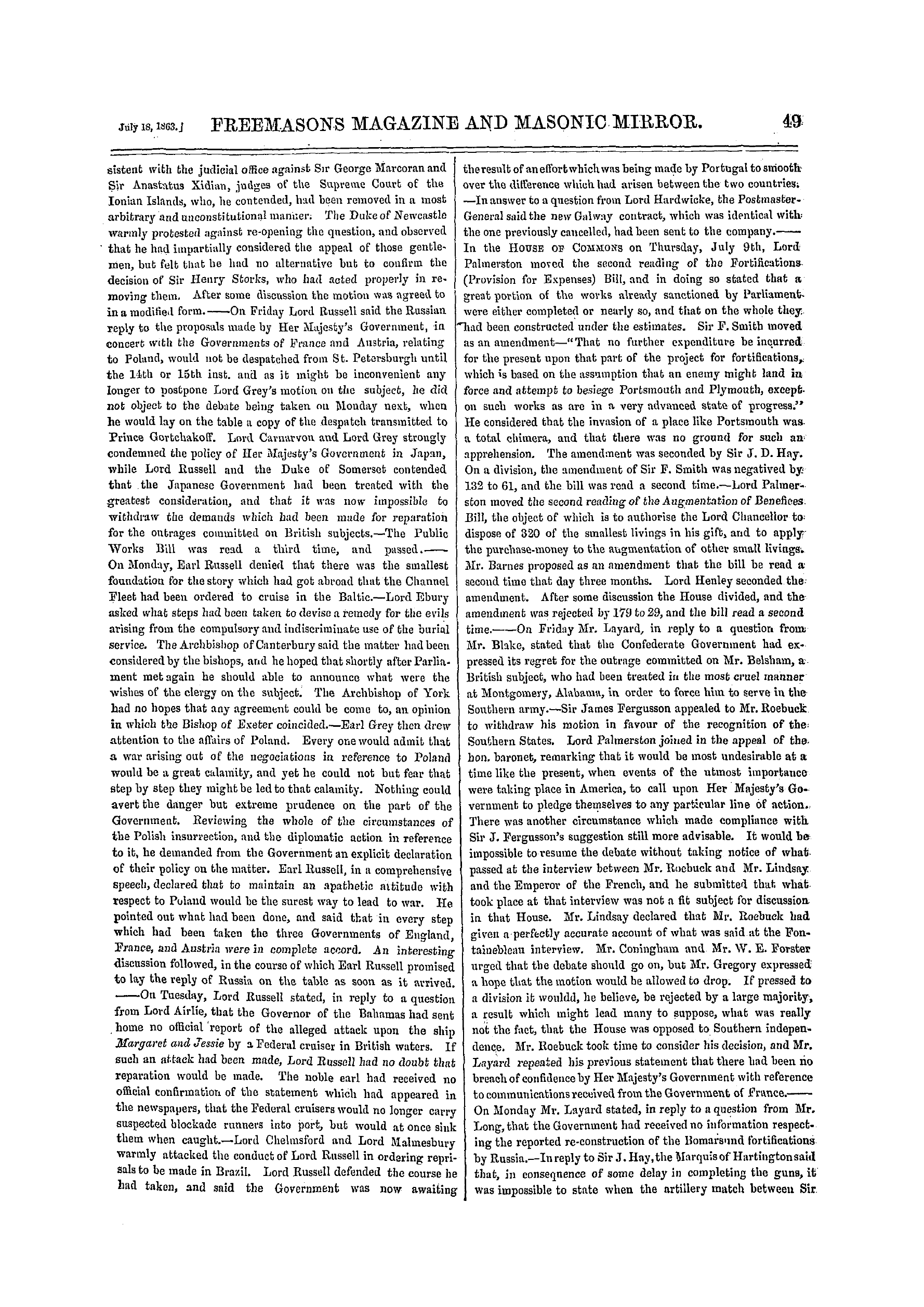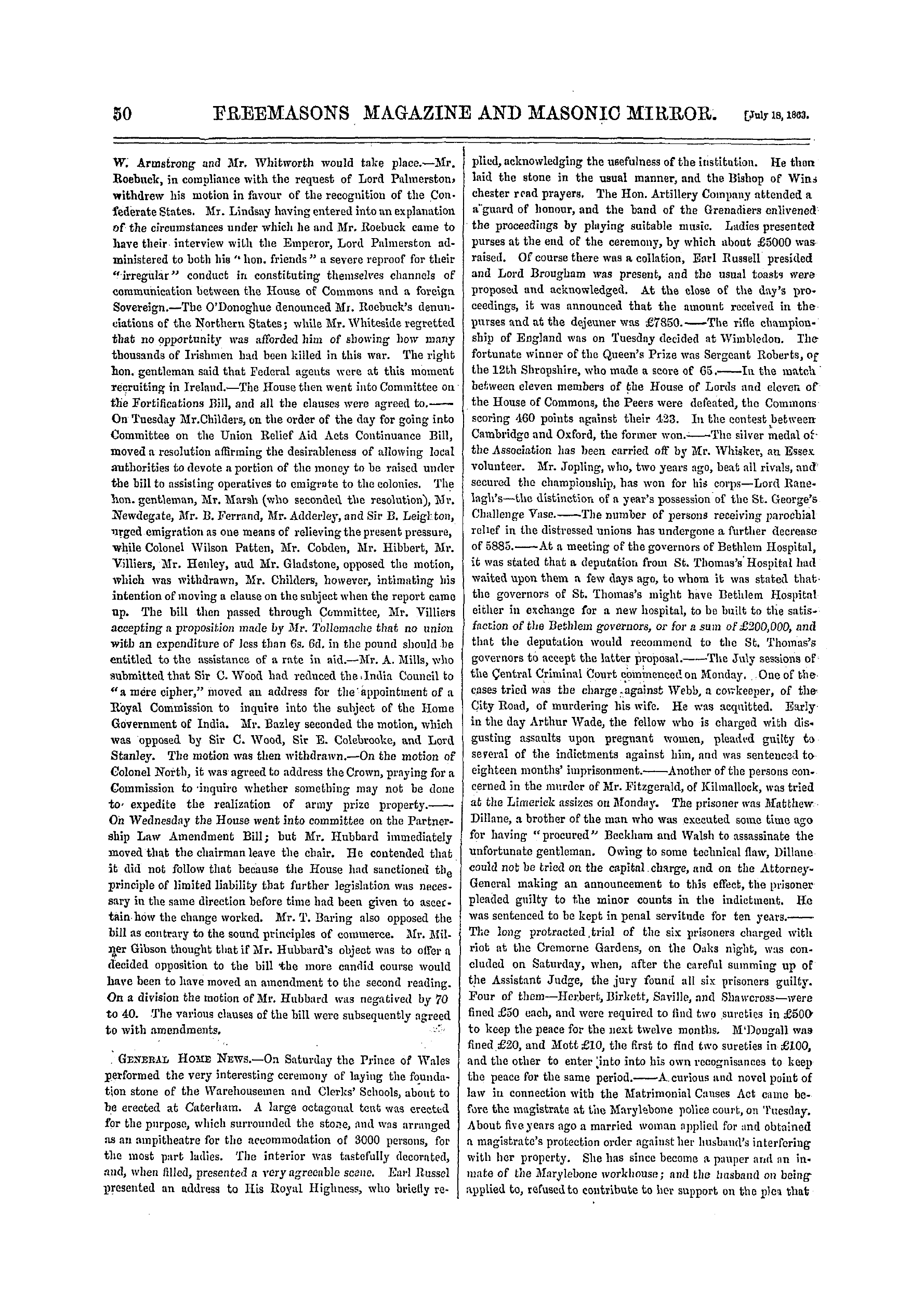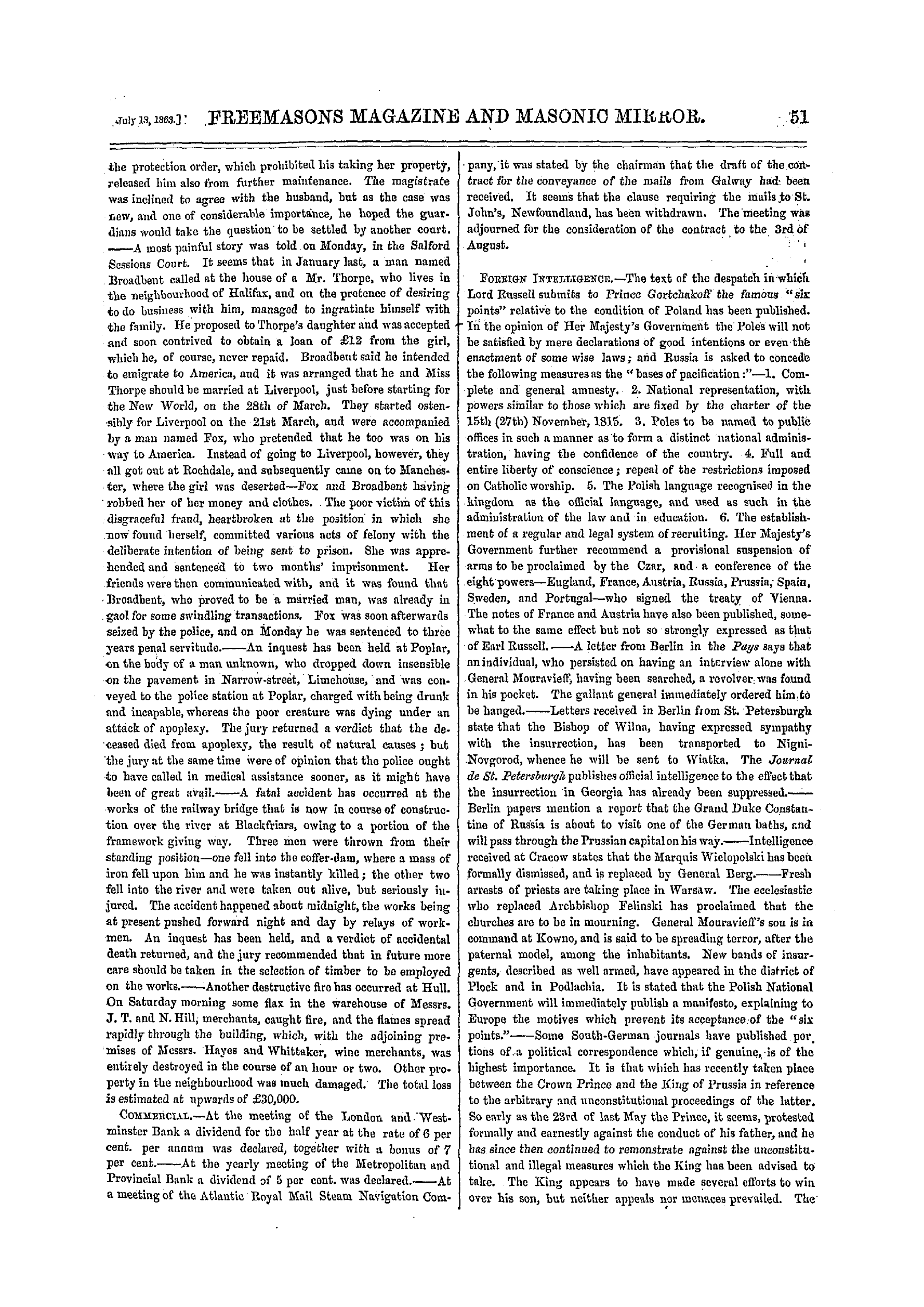-
Articles/Ads
Article THE CRAFT LECTURES, OF FIFTEEN SECTIONS. ← Page 2 of 3 →
Note: This text has been automatically extracted via Optical Character Recognition (OCR) software.
The Craft Lectures, Of Fifteen Sections.
made in ?"—questions that elicited nothing , and were merely ludicrous puzzles for those unable to return the conventional replies . The lectures , properly so called by common custom , were not in existence before 1720 , at
least Dr . Oliver , in his Symbol of Glory , say those Avere the earliest he has met with . Previous to this period it is presumed the masters . gave such an extemporaneous history as his talents and knoAvledge Avould permit . True , there were
certain charges which Avere ordered to be read at the " making of a- new brother , " but they contained no reference to the symbols , traditions , or ceremonies of tho order , being confined to the moral duties Freemasons OAved to each other .
About 172-0 , Drs . Anderson and Desaguliers framed a series of catechetical instruction Avhich have ever since been termed lectures , and that form has been retained under every change or enlargement of them . The master's part
contained only thirty-one questions , several of which partook of the nature of the tests Ave have before alluded to , aud Dr . Oliver says " the questions and answers are short and comprehensive , containing a brief digest of the general principles of
the craft , as it Avas understood at that period . " Here our venerable authority seems to be a little at fault because in taking Drs . Anderson and Desaguliers as the exponents of the Masonic knowledge of the period , he overlooks that large
body of early Freemasons Avho adhered to the old York rite , and steadily avoided an amalgamation with the revived Grand Lodge on which they did not look wifcli any degree of favour . That these lodges did possess a system of instruction can be
easily proA'ed , but the iiiA r estigation would be too long for our present purpose , so we return to the more popular side of the question .
There is , however meagre it may be , a general feature of similarity running through all the lectures down to the last revision . In Anderson ' s first degree lecture many things are now brought more forward , and others are as
necessarily glossed over to bring them into consonance with modern usage . Amongst the prominent topics fchejilaceof theApprenticesAvas indicated , the jiuiiiskmenf ; of cowans , the use of the bone box , the clothing of the master , the age of the
apprentice , and many other particulars . Those omitted had reference to , amongst others Avhich it is needless to name , the places where old Masons met ,
the ladder , the parallel lines , the points of entrance were designated as principal signs , and the distinctions betAveen operative and speculative Freemasonry Avas given in this degree instead of the second .
The FelloAV-Crafts lecture Avas very brief , and so was that of the Master Mason . For obvious reasons the dissimilarities cannot be indicated here . The Avhole were essentially Christian . In 1732 , the Reverend Martin Clare , A . M .,
was instructed by the Grand Lodge to prepare a system of lectures which should be " adapted to the existing state of the order , Avithout infringing on the ancient landmarks . " This commission , of course , resulted in an amplification of the
Andersonian system , and contained many improvements , which were so much approA-ed that the practice of them Avas enjoined on all the lodges . Without ; hoAvever , denuding them of all Christian allusions , many such were modified and the Jewish bre ^
thren's peculiarities of faith taken into account , still they remained essentially Christian , recognising the Trinity , the institution of our Sunday , and the ecclesiastical symbolism attached to the numbers three , fiA ^ e , and seven .
About 1770 , Martin Clare ' s system was considered obsolete , and Bro . Dunckerleywas authorised to prepare a neAV set of lectures to supersede the old ones . He did so , and incorporated certain matter from Derinott's Royal Arch , changing the
Master's word , and placing a substitute in its stead . This aroused considerable opposition , but his interest and knoAvledge carried the point ..
About this time the Reverend William Hutchinson , author of The Spirit of Masonry , had compiled a system of lectures which was extensively adopted in the north of England , and admitted to be of great excellence .
The Grand SteAvard ' s Lodge , too , had a system of lectures peculiarly their own , and they Avere , and still are , the only legally recognised authority on the subject , all the claims of West-end or East-end Avorkings being based on the innovations
of a few men Avhose dogmatism created two diffenfc schools , the teaching of which are of not the slightest consequence to the order , as they « are only the perpetuators of brethren who , originally innovators themselves , attracted certain disci ples
to Avhom they taught their new-fangled ideas , -and who now call upon all to boAv doAvn in homage to the name of Peter Gilkes , Peter Broadfoofc , and
Note: This text has been automatically extracted via Optical Character Recognition (OCR) software.
The Craft Lectures, Of Fifteen Sections.
made in ?"—questions that elicited nothing , and were merely ludicrous puzzles for those unable to return the conventional replies . The lectures , properly so called by common custom , were not in existence before 1720 , at
least Dr . Oliver , in his Symbol of Glory , say those Avere the earliest he has met with . Previous to this period it is presumed the masters . gave such an extemporaneous history as his talents and knoAvledge Avould permit . True , there were
certain charges which Avere ordered to be read at the " making of a- new brother , " but they contained no reference to the symbols , traditions , or ceremonies of tho order , being confined to the moral duties Freemasons OAved to each other .
About 172-0 , Drs . Anderson and Desaguliers framed a series of catechetical instruction Avhich have ever since been termed lectures , and that form has been retained under every change or enlargement of them . The master's part
contained only thirty-one questions , several of which partook of the nature of the tests Ave have before alluded to , aud Dr . Oliver says " the questions and answers are short and comprehensive , containing a brief digest of the general principles of
the craft , as it Avas understood at that period . " Here our venerable authority seems to be a little at fault because in taking Drs . Anderson and Desaguliers as the exponents of the Masonic knowledge of the period , he overlooks that large
body of early Freemasons Avho adhered to the old York rite , and steadily avoided an amalgamation with the revived Grand Lodge on which they did not look wifcli any degree of favour . That these lodges did possess a system of instruction can be
easily proA'ed , but the iiiA r estigation would be too long for our present purpose , so we return to the more popular side of the question .
There is , however meagre it may be , a general feature of similarity running through all the lectures down to the last revision . In Anderson ' s first degree lecture many things are now brought more forward , and others are as
necessarily glossed over to bring them into consonance with modern usage . Amongst the prominent topics fchejilaceof theApprenticesAvas indicated , the jiuiiiskmenf ; of cowans , the use of the bone box , the clothing of the master , the age of the
apprentice , and many other particulars . Those omitted had reference to , amongst others Avhich it is needless to name , the places where old Masons met ,
the ladder , the parallel lines , the points of entrance were designated as principal signs , and the distinctions betAveen operative and speculative Freemasonry Avas given in this degree instead of the second .
The FelloAV-Crafts lecture Avas very brief , and so was that of the Master Mason . For obvious reasons the dissimilarities cannot be indicated here . The Avhole were essentially Christian . In 1732 , the Reverend Martin Clare , A . M .,
was instructed by the Grand Lodge to prepare a system of lectures which should be " adapted to the existing state of the order , Avithout infringing on the ancient landmarks . " This commission , of course , resulted in an amplification of the
Andersonian system , and contained many improvements , which were so much approA-ed that the practice of them Avas enjoined on all the lodges . Without ; hoAvever , denuding them of all Christian allusions , many such were modified and the Jewish bre ^
thren's peculiarities of faith taken into account , still they remained essentially Christian , recognising the Trinity , the institution of our Sunday , and the ecclesiastical symbolism attached to the numbers three , fiA ^ e , and seven .
About 1770 , Martin Clare ' s system was considered obsolete , and Bro . Dunckerleywas authorised to prepare a neAV set of lectures to supersede the old ones . He did so , and incorporated certain matter from Derinott's Royal Arch , changing the
Master's word , and placing a substitute in its stead . This aroused considerable opposition , but his interest and knoAvledge carried the point ..
About this time the Reverend William Hutchinson , author of The Spirit of Masonry , had compiled a system of lectures which was extensively adopted in the north of England , and admitted to be of great excellence .
The Grand SteAvard ' s Lodge , too , had a system of lectures peculiarly their own , and they Avere , and still are , the only legally recognised authority on the subject , all the claims of West-end or East-end Avorkings being based on the innovations
of a few men Avhose dogmatism created two diffenfc schools , the teaching of which are of not the slightest consequence to the order , as they « are only the perpetuators of brethren who , originally innovators themselves , attracted certain disci ples
to Avhom they taught their new-fangled ideas , -and who now call upon all to boAv doAvn in homage to the name of Peter Gilkes , Peter Broadfoofc , and
